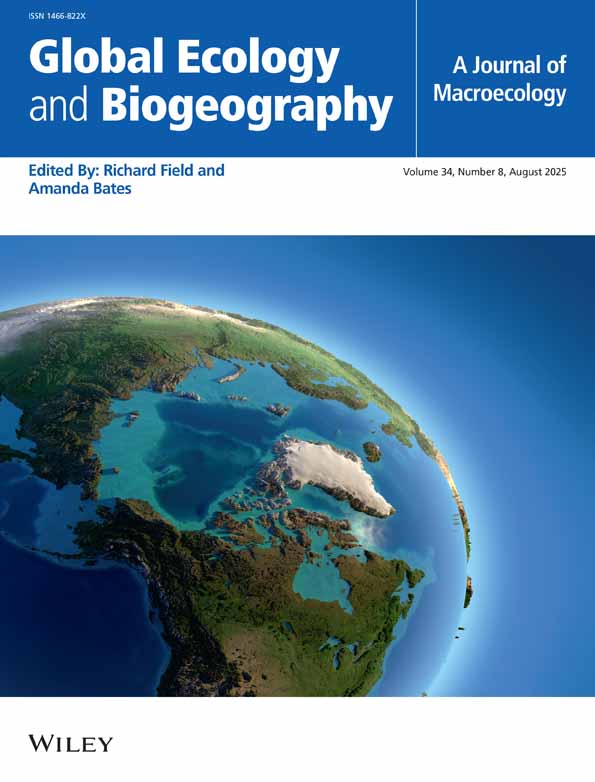How are communities built from species pools?
Community ecology has a long history of interest in identifying the mechanisms restricting local community membership to subsets of the pool of potential colonists. Attempting to answer the question ‘How are communities built from species pools?’ should involve patterns of species distributions at large (macro) scales, and indeed that is the direction taken by the contributions in the symposium volume on assembly rules edited by E. Weiher and P. Keddy (W & K). Although certain ecological factors, such as habitat requirements and species interactions, may be manipulated to provide insights about candidate assembly rules for the communities involved, it has been argued that experimental data alone may not address the extent to which certain small-scale mechanisms are influential at larger scales. In fact, the tool of choice among several contributions in W & K for assessing the likelihood of the tested assembly rules, involves ‘null models’. Null models constitute a body of statistical methods, mainly based on Monte Carlo approaches, to assess whether patterns found in data are consistent with the expected results of a particular ecological mechanism of interest (e.g. interspecific competition). In this search, null models should be tailored to include the effects of all factors except the mechanism of interest. If the null model is rejected, it provides support for the mechanism being tested.
In their introduction, the editors state that the term ‘assembly rules’ should be used to signify the problem of how species are assembled from regional pools into communities. It is an interesting historical account to note how the terms ‘null models’ and ‘assembly rules’ are used interchangeably. However, although null models may be used as a tool in the search for assembly rules, they can be also applied when searching for patterns in other types of ecological problems (e.g. animal behaviour, population dynamics or phylogeny). We believe that this distinction is important and that other research tools, such as manipulative experiments, can be useful complementary tools when searching for assembly rules organizing communities (see D. Kelt and J. Brown for some discussion — Chapter 3). A large portion of the long-standing controversy regarding assembly rules is related to the statistical issues involving null models, and perhaps some harmony could be achieved if assembly rules were to be seen as ideas of how communities are built from regional species pools and null models as recipes to deal with and test these ideas.
W & K includes a collection of 14 papers that are not as diverse in taxa studied as in the ways that assembly rules were investigated. A positive side of the book is that most contributors provide some historic and polemic accounts about their specific interests, organizing their chapters in a more educational fashion than standard papers in scientific journals. It also provides a wide range of problems where assembly rules have been applied, including issues related to conservation biology. However, most contributions fail in providing details on the specific methodological approaches that would allow readers to use the protocols involved. Also, given the style of writing used by most contributors, it is hard to distinguish whether some statements are personal opinions or accepted ecological facts. Ideally one should read J. Bastow Wilson's contribution (Chapter 5) first, as it may provide the reader with some general guidance for the remainder of the book. His chapter is helpful as it places the different types of data involved in community analysis (e.g. richness, species distribution, species-level traits) into different types of assembly rules (e.g. limiting similarity, species saturation, guild proportionality). The first three chapters provide a provocative debate on the issues related to guild assembly rules for mammals, and also on the ecological and statistical merits involving assembly rules and null models in general. The editors’ contribution (Chapter 9) provides good coverage of how species-level traits may be used in determining sources of constraints in local community membership. Mark Lomolino's (Chapter 10) contribution is an important account of the influences of immigration and extinction across ecological and spatial scales in determining community composition.
Two foci of discussions seemed relevant while reading the book. The first one is whether assembly rules should or should not involve environmentally mediated patterns as a way of accounting for ecological restrictions to local membership. Bastow Wilson (Chapter 5) argues that assembly rules should only account for patterns driven by species interactions whereas the editors (Chapters 1 and 9) consider that assembly rules should account for patterns that are mediated either through the environment or species interactions. The second focus, which is also relevant to the previous one, is how to control for species habitat requirements in null models when assessing the importance of interspecific competition in determining local community membership (see Chapters 1, 3 and 5). In this case, evidence for non-random patterns in species distributions does not necessarily imply the role of competition, but could be equally related to other factors, such as differences in environmental requirements of the species.
Although the book is not concisely written or well organized (in particular the introductory chapter), we believe that Ecological Assembly Rules has a space on the Community Ecology section of any ecologist's bookshelf and will provide a source of papers, ideas, and challenges that should be useful.
Pedro R. Peres-Neto and Donald A. Jackson Department of Zoology University of Toronto Canada
& (eds ) ( 2001 ) Ecological assembly rules: perspectives, advances, retreats . Cambridge University Press , Cambridge, UK . xii + 418 pp, figs, tables, index. Paperback: Price £24.95 . ISBN 0-521-65533-1 . Hardback (1999): Price £75.00 . ISBN 0-521-65235-9 .




